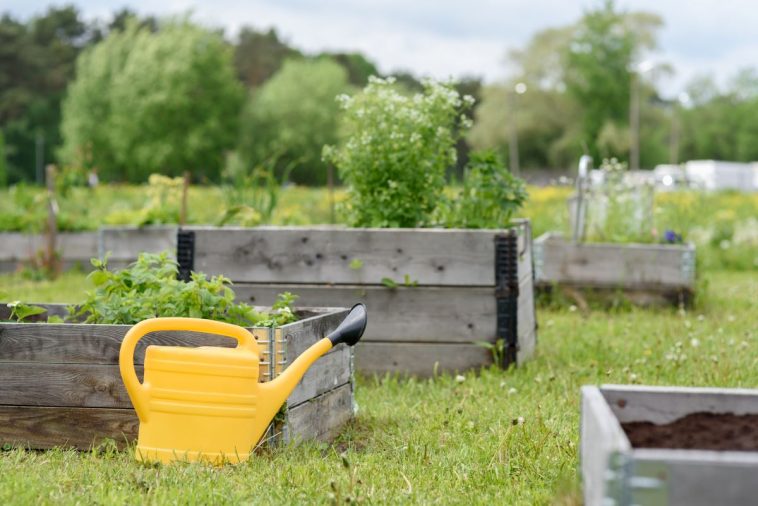How to Make a High Bed from Pallets
High beds have become increasingly popular in recent years as they offer a range of benefits over traditional garden beds. They are typically raised above the ground, making it easier for gardeners to tend to their plants without having to bend or kneel down. Additionally, they can be filled with a variety of nutrient-rich soil, which is great for plants, and are also an excellent solution for gardens with poor soil quality. If you’re interested in making your own high bed, using pallets is an easy and cost-effective option.
Why Pallets are Suitable for High Beds
Pallets are made of sturdy, non-toxic woods such as pine, oak, or spruce, making them a safe and reliable choice for gardening. Pallets are also readily available and easy to source, as they can often be found for free or at low cost from local businesses. Additionally, using pallets for high beds helps to reduce waste as they are often discarded after use and would otherwise end up in landfills.
How to Build Your Pallet High Bed
Building a pallet high bed is a straightforward and simple process that requires minimal tools and equipment. Begin by selecting a flat, even space in your garden where you would like to place the bed. Next, gather your materials, including at least four pallets of the same size, a saw, screws, and a drill.
The first step is to disassemble the pallets by carefully removing the boards that make up the pallet. Begin by removing the bottom boards, this is typically the thickest board in the pallet. Then, remove the remaining boards by cutting through the nails using a saw. Once you have removed all the boards from the pallets, you should have a stack of wood planks that are roughly the same length.
Next, take two of the pallets that you wish to use for the base of your high bed, place them side by side, and attach them together using screws and a drill. Repeat this process with the remaining two pallets for the top of your high bed. You should now have two rectangular frames – one for the top of your high bed and one for the bottom.
Now, you can attach the sideboards to your high bed frame. To do this, measure the length of each side of your rectangle and cut your planks in the same length. Attach the planks to the side of the frame, making sure they are securely screwed in place. Ensure that the sideboards are tall enough to provide the height you want for your high bed, typically around 30-40cm. Once you have secured the sideboards in place, you can add additional planks to the top of the high bed frame to create a secure covering for your plants.
Key Considerations for Your High Bed
When building your high bed, there are several factors to consider to ensure that it is both functional and attractive. First and foremost, the bed should be sturdy and level, so it can hold the weight of your soil and plants evenly. You may need to add additional support beams to ensure that the bed will not sag or warp over time. Additionally, the high bed should be tall enough that it prevents animals such as rabbits and deer from getting into your plants. Finally, consider adding a layer of landscape fabric or gravel to the bottom of your high bed to promote drainage and reduce instances of water-logging.
Bullet Points:
- Use pallets made of sturdy, non-toxic woods such as pine, oak, or spruce
- Carefully disassemble the pallets, removing the boards and cutting through the nails using a saw
- Attach the pallets together using screws and a drill to create two rectangular frames
- Attach additional planks to the high bed frame to create a secure covering for your plants
- Consider adding additional support beams to ensure that the bed is sturdy and level, and tall enough to prevent animals from getting in
- Add a layer of landscape fabric or gravel to the bottom of your high bed to improve drainage
Conclusion
Creating a high bed from pallets is a cost-effective, sustainable, and easy solution for green fingered enthusiasts who want to grow their own plants and vegetables. By following the simple steps outlined in this article, you too can create a stunning high bed in your garden that is sure to impress all your friends and family. Remember to consider all the factors outlined to ensure that your high bed is functional, sturdy, and able to stand the test of time.
FAQs:
1) What are the benefits of using pallets for high beds?
Pallets are a great choice for high beds due to their sturdy construction, low cost, and sustainability factor. They are also easy to source, and readily available, making them a convenient solution for those who want to try their hand at gardening. Additionally, by using pallets for high beds, you are helping to reduce waste and promote sustainability in your garden.
2) Where can I find pallets for my high bed?
Pallets can often be found for free or at low cost from local businesses such as hardware stores, supermarkets, or garden centers. Check with your local recycling centers or community garden centers to see if they offer pallets for sale or donation.
3) How tall should my high bed be?
Typically, high beds should be around 30-40cm tall to provide enough soil depth for your plants to grow. This height also helps to prevent animals from getting into your plants.
4) How do I care for my high bed?
Regular watering and fertilization is essential for the health of your plants. Make sure to water your high bed regularly and fertilize according to the needs of your plants. Additionally, be sure to check for any signs of pests or disease and take action accordingly.
5) How can I make my high bed more attractive?
There are many ways to enhance the aesthetic appeal of your high bed. You can add flowers or ornamental plants to create a more colorful display, or mix and match different types of leafy greens for a more varied look. Additionally, consider adding decorative elements such as statues or garden ornaments to create a unique and personalized touch to your high bed.







![Truly Timber® Premium Hochbeet Holz Terraluxe – [Komplettpaket] Erweiterbar, Wetterfest & Stilvoll | Perfekte Anbaufläche für Gemüse und Kräuter | Robustes Holzdesign für nachhaltiges Gärtnern…](https://m.media-amazon.com/images/I/5128fp0miSL._SL160_.jpg)

